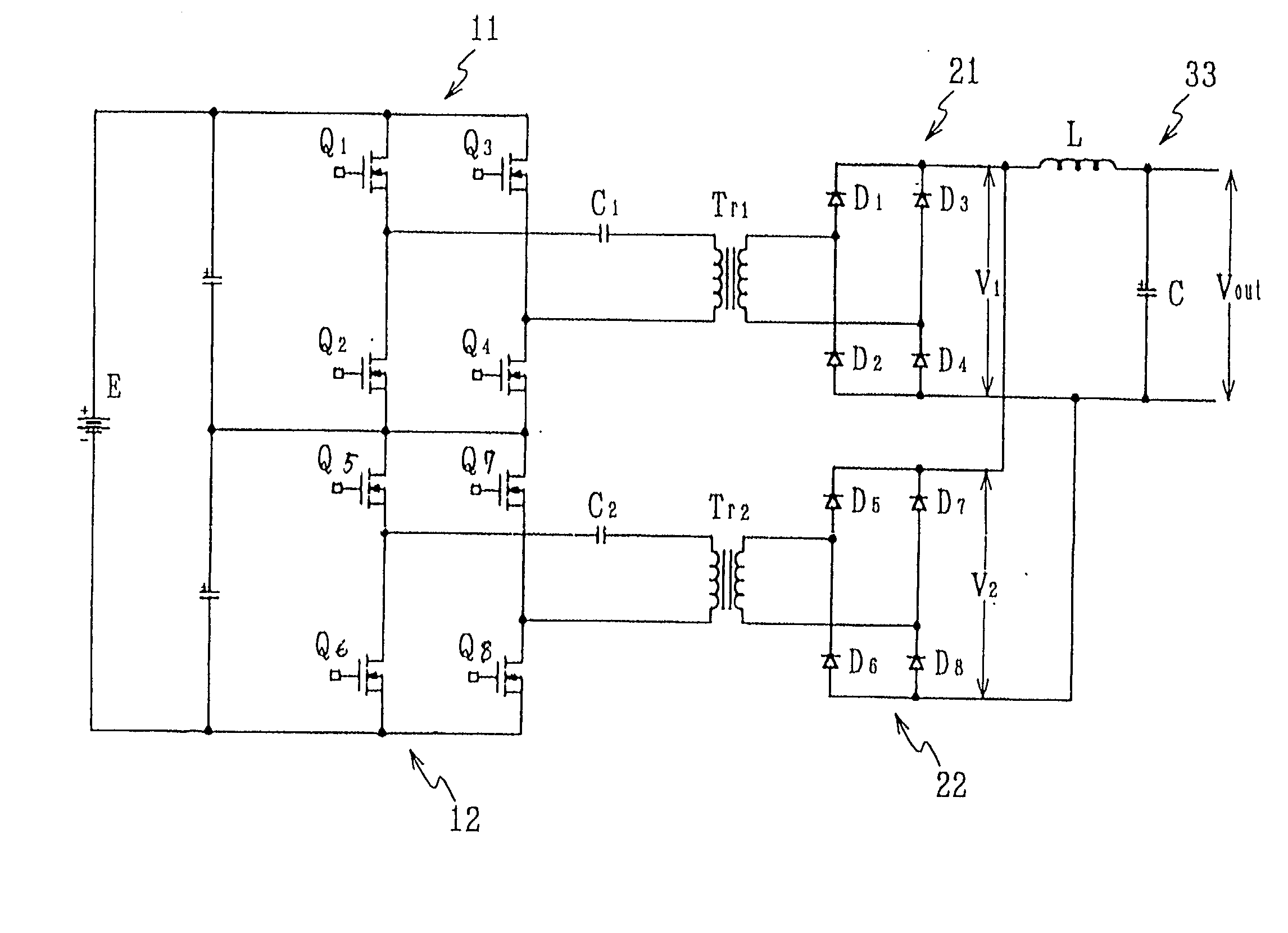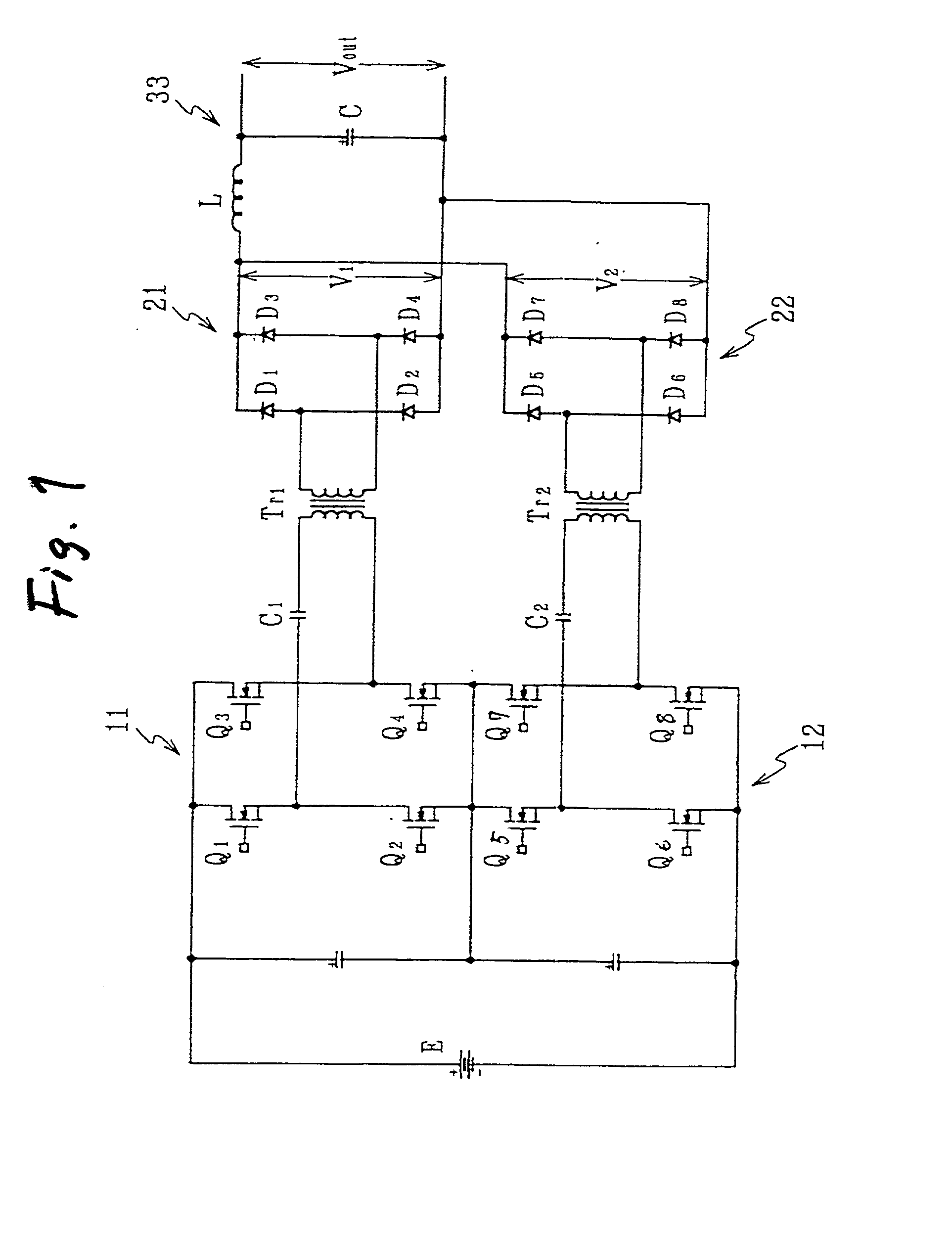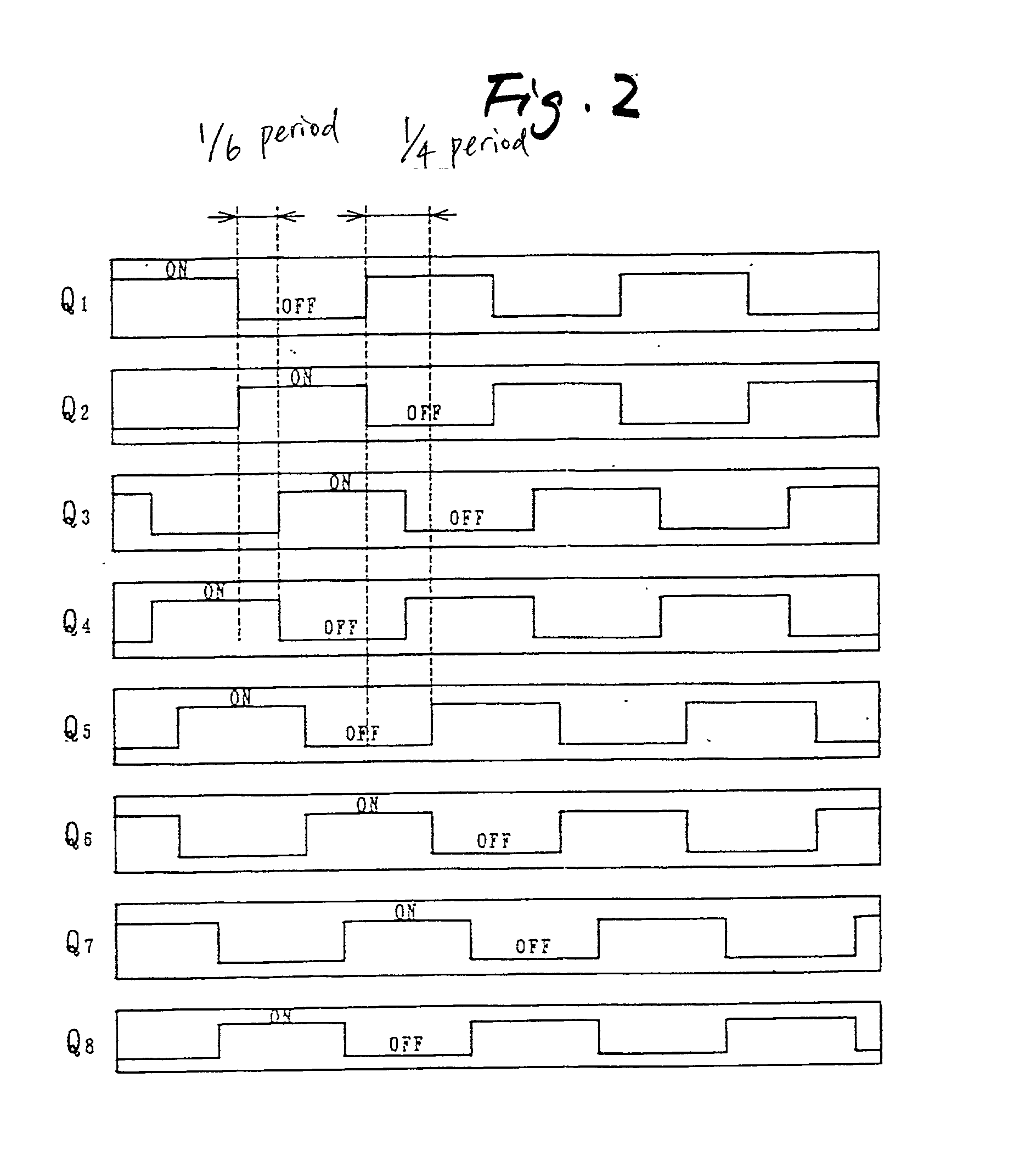DC-DC converter and bi-directional DC-DC converter and method of controlling the same
a dc-dc converter and converter technology, applied in the direction of electric variable regulation, process and machine control, instruments, etc., can solve the problems of increasing the switching frequency in proportion to the switching frequency, reducing the switching loss, and increasing the switching frequency is not suitabl
- Summary
- Abstract
- Description
- Claims
- Application Information
AI Technical Summary
Benefits of technology
Problems solved by technology
Method used
Image
Examples
first embodiment
[0061] Embodiments of a DC-DC converter and a bi-directional DC-DC converter according to the invention will be described below in detail. FIG. 1 is a circuit diagram of the DC-DC converter according to the invention. FIG. 2 is a timing chart of gate signals for turning on / off respective switching elements Q.sub.1 to Q.sub.8 in the DC-DC converter. FIG. 3 is a waveform chart of output voltages V.sub.1 and V.sub.2 of rectifier circuit portions 21 and 22, primary voltages of transformers Tr.sub.1 and Tr.sub.2 and drain-source voltages V.sub.ds and drain currents I.sub.d of the respective switching elements Q.sub.1 to Q.sub.8.
[0062] In the first embodiment, the DC-DC converter has n sets (for example, two sets) of converter circuit portions 11 and 12, two transformers Tr.sub.1 and Tr.sub.2, two sets of rectifier circuit portions 21 and 22, and an LC smoothing circuit 33. The two sets of converter circuit portions 11 and 12 respectively include two pairs of switching elements Q.sub.1, Q...
fourth embodiment
[0079] FIG. 7 is a circuit diagram of the DC-DC converter according to the invention. FIG. 8 is a timing chart of gate signals Pg.sub.1 to Pg.sub.4 and Pg.sub.5 to Pg.sub.8 for turning on / off respective switching elements Q.sub.1 to Q.sub.4 and Q.sub.5 to Q.sub.8 in the DC-DC converter. FIG. 9 is a waveform chart of output voltages V.sub.1 and V.sub.2 of rectifier circuit portions 121 and 122, primary voltages of transformers Tr.sub.1 and Tr.sub.2 and drain-source voltages Vds and drain currents Id of the respective switching elements Q.sub.1 to Q.sub.4 and Q.sub.5 to Q.sub.8.
[0080] In this embodiment, the DC-DC converter has a main circuit 110 including n sets (for example, two sets) of converter circuit portions 111 and 112, two transformers Tr.sub.1 and Tr.sub.2, two sets of rectifier circuit portions 121 and 122, and a smoothing circuit portion LoCo. The two sets of converter circuit portions 111 and 112 respectively include two pairs of switching elements Q.sub.1, Q.sub.4 and Q...
fifth embodiment
[0093] FIG. 13 shows a voltage compensating portion for the purpose of compensating the fluctuation (abatement) of the output voltage Vo in accordance with the fluctuation of the input voltage of the DC power source Ed in the DC-DC converter of the The voltage compensating portion includes tap changing circuits 161 and 162 which are provided between the transformers Tr.sub.1, Tr.sub.2 and the rectifier circuit portions 121, 122 in the main circuit 110 for changing taps in the secondary windings of the transformers Tr.sub.1 and Tr.sub.2 respectively.
[0094] In the control portion 151, the output voltage Vo of the rectifier circuit portions 121 and 122 in the main circuit 110 is detected by the voltage detecting unit 150. As shown in FIG. 14, the output voltage Vo detected thus is compared with the instructed output voltage value Vo.sup.ref which is set in advance. Error between the output voltage Vo and the instructed output voltage value Vo.sup.ref as a result of the comparison is a...
PUM
 Login to View More
Login to View More Abstract
Description
Claims
Application Information
 Login to View More
Login to View More - R&D
- Intellectual Property
- Life Sciences
- Materials
- Tech Scout
- Unparalleled Data Quality
- Higher Quality Content
- 60% Fewer Hallucinations
Browse by: Latest US Patents, China's latest patents, Technical Efficacy Thesaurus, Application Domain, Technology Topic, Popular Technical Reports.
© 2025 PatSnap. All rights reserved.Legal|Privacy policy|Modern Slavery Act Transparency Statement|Sitemap|About US| Contact US: help@patsnap.com



